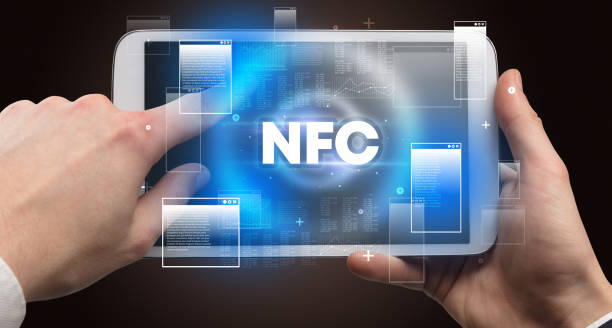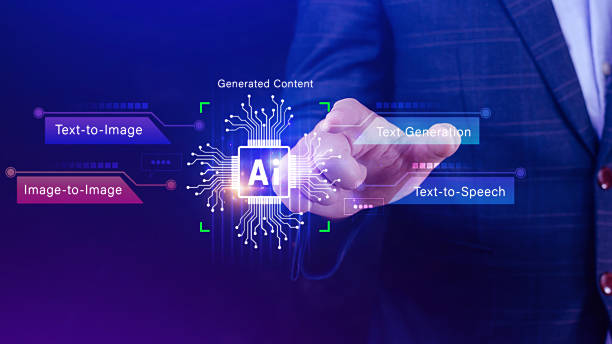An Introduction to the World of Artificial Intelligence and Robots
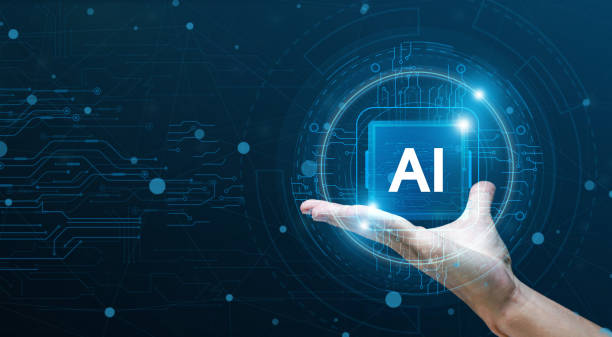
In recent decades, the concept of #AI_Robot has stepped from the pages of science fiction stories into our daily reality.
This remarkable transformation has not only redefined the boundaries of machine capabilities but has also revolutionized our perspective on the future of work, life, and even human interactions.
Artificial intelligence, which lies at the core of these robots, enables machines to analyze data, learn, reason, and even make decisions.
These capabilities have transformed robots from mere programmed machines into more autonomous and adaptive entities capable of operating in complex environments.
A deeper understanding of AI principles is essential for recognizing the capabilities of these robots.
An AI robot can optimize production processes in industrial environments, assist surgeons in hospitals, and even facilitate daily tasks in homes.
This diversity of applications demonstrates their immense potential in creating a Fourth Industrial Revolution.
However, like any emerging technology, AI robots also pose their own ethical, social, and economic challenges that require careful discussion and consideration.
These initial explanations provide a basis for a better understanding of this emerging phenomenon.
The aim of this article is to explore various dimensions of this technology, from its history to its future outlook and its impact on human life.
We will try to provide the complexities of this field in simpler language with an explanatory approach and show how these robots are changing our world.
These initial steps in the development of intelligent robots promise a future where machines and humans can operate in greater harmony with each other.
Ultimately, understanding how this technology works and its impacts will help us prepare for a future where robots play a more prominent role.
Tired of losing business opportunities due to not having a professional corporate website? Worry no more! With Rasaweb’s corporate website design services:
✅ Your brand’s credibility and professionalism will increase.
✅ You will attract more customers and sales leads.
⚡ Get a free consultation right now to start!
History and Evolution of Intelligent Robotics
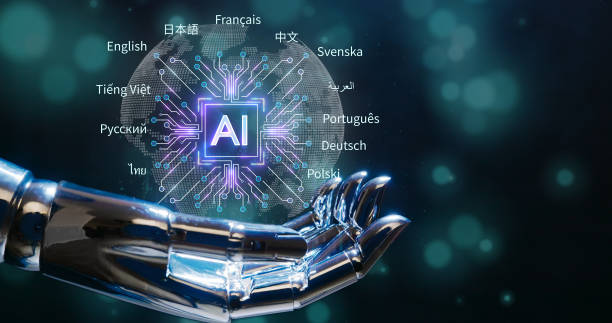
The evolution of #Robotics_History and #AI_Evolution is a winding story of human ambitions in building mechanical beings.
The roots of this idea can be found in ancient automata and Greek myths, but modern robotics took shape with the advent of the Industrial Revolution and the need for process automation.
Initially, robots were simple machines that performed repetitive and pre-programmed tasks without any intelligence.
The 1950s and 60s saw the birth of the first industrial robots like Unimate, which were used in car assembly lines.
This era laid the foundation for #New_Generation_Robots and intelligent robots.
With the advancement of computer science and the emergence of the concept of artificial intelligence in the mid-20th century, a new chapter in the story of robotics opened.
Researchers sought to make robots perform not only mechanical tasks but also thought processes.
From the 1980s and 1990s onwards, with the development of machine learning algorithms and increased processing power, robots gained more perceptual capabilities.
They were able to use sensors to collect environmental information, understand their surroundings, and make decisions based on that.
These advancements paved the way for the emergence of intelligent robots that are capable of more complex interaction with humans and the environment.
Today, robotics and artificial intelligence are so intertwined that separating them is difficult.
From precise surgical robots to self-driving cars and drones, all are examples of the synergy between artificial intelligence and mechanics.
This evolution has not only increased efficiency and accuracy but has also enabled the performance of tasks that previously seemed impossible.
In fact, every advancement in the field of artificial intelligence directly impacts the capabilities of robots and paves the way for further innovations.
Types of Intelligent Robots and Their Amazing Applications
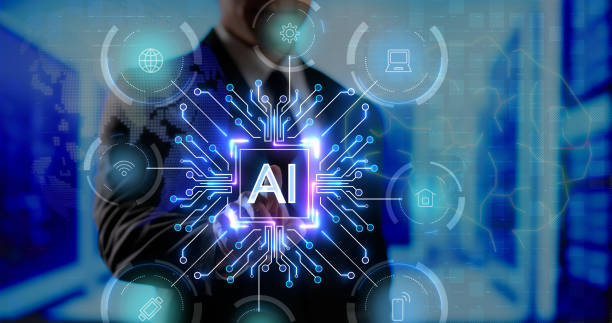
The world of #Types_of_Robots and #AI_Applications is very vast and diverse.
Today, an AI robot is no longer limited to mechanical arms in factories; they have an active presence in countless fields, from #Industry and #Medicine to services and entertainment.
These robots are classified based on their structure, capabilities, and application area.
For example, industrial robots used in production lines are typically designed for repetitive and precise tasks such as welding or assembly.
In contrast, service robots, such as domestic vacuum cleaner robots or guide robots in shopping centers, are designed for interaction with humans and direct service provision.
Another type is exploratory robots, used for examining hazardous or inaccessible environments such as other planets, ocean depths, or disaster-stricken areas.
Also, medical robots like the da Vinci surgical robot provide unparalleled precision and delicacy in surgical operations and greatly assist the healthcare sector.
One of the most significant advancements in this field is the development of collaborative robots or “cobots,” which can work alongside humans and in shared spaces with them.
These robots are equipped with advanced safety systems and artificial intelligence to prevent collisions with humans and provide effective cooperation.
The applications of these robots are expanding daily, and there is almost no area of human life where intelligent robots cannot play a role.
This diversity in application has made them a vital tool for the advancement of human civilization.
Below is a table of some of these robots and their applications:
| Type of Intelligent Robot | Main Application | Example or Key Feature |
|---|---|---|
| Industrial Robots | Production line automation, assembly, welding | Unimate, KUKA Robotics, high precision and speed |
| Service Robots | Home assistance, guidance, delivery | Roomba (smart vacuum cleaner), Pepper (social robot) |
| Medical Robots | Precise surgery, rehabilitation, diagnosis | Da Vinci (surgery), exoskeleton rehabilitation robots |
| Exploration Robots | Space exploration, underwater, hazardous environments | NASA Mars rovers, underwater robots |
| Cobots (Collaborative Robots) | Safe collaboration with humans in the workplace | Universal Robots (UR), YuMi (ABB), flexibility and safety |
How Do Intelligent Robots Work? Hidden Mechanisms

Understanding how an #Intelligent_Robot functions depends on recognizing the complex mechanisms of #Natural_Language_Processing, #Machine_Learning, and #Computer_Vision that form the core of their intelligence.
To perform its tasks, an AI robot first needs to sense its surroundings.
This is done by a set of sensors such as cameras (for computer vision), microphones (for language processing), tactile sensors, and distance sensors (like LiDAR and radar).
The raw data collected by these sensors is then sent to the robot’s central processing unit.
The brain of an intelligent robot is its processing unit, which typically includes powerful processors and advanced artificial intelligence algorithms.
Machine learning, especially deep learning, enables robots to learn patterns from data and make decisions and adapt to new situations without explicit programming for every scenario.
For example, a robot using computer vision can recognize objects, plan its movement path, and even understand human emotions through facial expressions.
Natural language processing allows robots to understand voice commands and respond in human language, which makes interaction with them much more intuitive and natural.
After processing information and making a decision, the robot performs the necessary physical actions through its actuators (such as motors, arms, wheels, etc.).
This continuous cycle of sensing, processing, decision-making, and acting allows robots to operate effectively in dynamic and uncertain environments.
All these stages must be performed in real-time and with minimal delay so that the robot can quickly react to environmental changes and correctly perform its tasks.
This complex process requires unparalleled coordination between hardware and software, which enables intelligent robots to perform complex and even creative tasks.
Click here for more technical details on how robots work.
Are you losing business opportunities because of an outdated website? With Rasaweb, permanently solve the problem of not attracting potential customers through your website!
✅ Attract more high-quality leads
✅ Increase brand credibility in the eyes of customers
⚡ Get a free corporate website design consultation
The Impact of AI Robots on Global Society and Economy
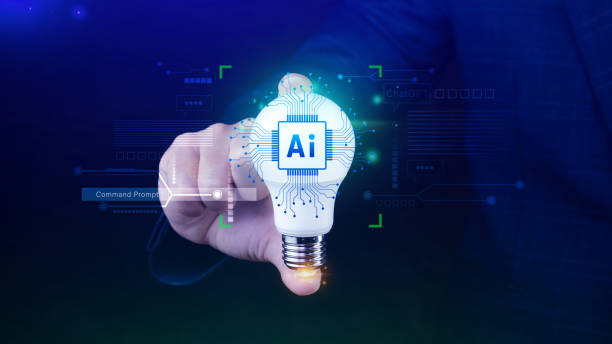
The emergence of #Intelligent_Robots and their spread across various sectors of society has had profound and multifaceted impacts on #Employment, #Future_Economy, and #Social_Changes.
On one hand, these robots have high potential for increasing productivity, reducing costs, and improving quality of life.
In various industries, automation of processes by robots has led to higher production with greater speed and accuracy, and has enabled customized production.
This can lead to economic growth and an increase in national wealth.
However, serious concerns also exist regarding their impact on the labor market.
Many jobs involving repetitive or heavy physical tasks are at risk of being replaced by robots.
This could lead to widespread unemployment and social inequalities, unless serious plans are made for retraining the workforce and creating new jobs.
Discussions about universal basic income and changes in educational models to prepare the workforce for a robotics-based economy are among the most important topics in this area.
From a social perspective, intelligent robots can help improve people’s quality of life.
Care robots for the elderly, educational robots for children, and assistive robots for people with disabilities are examples of applications that can help increase individuals’ independence and well-being.
Also, robots can relieve humans of dangerous or tedious tasks and open up new opportunities for creativity and human activities.
Examining the impact of artificial intelligence on employment in Iran is also important.
However, questions regarding privacy, data security, and even the psychological effects of interacting with robots arise, which require deeper attention and discussion.
A future where AI robots play a more prominent role is one that requires strategic thinking and cooperation among governments, industries, and civil societies to ensure the benefits for all humans.
This simultaneous potential for creating opportunities and challenges has made AI robots one of the most important topics today.
Ethical Challenges and Accountability in AI Development
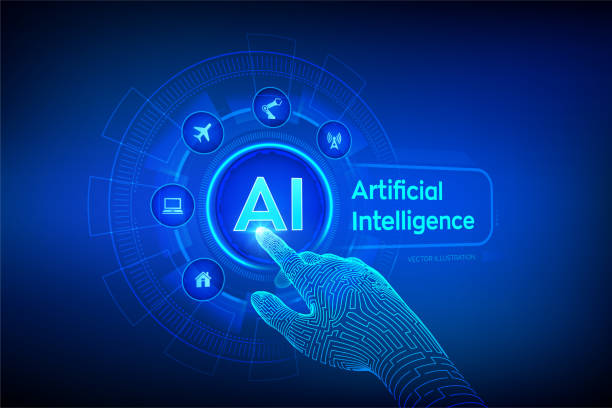
The increasing development of artificial intelligence and its application in building #AI_Robot has raised countless ethical and legal challenges.
As #AI_Ethics and #Data_Privacy have come into focus, the debate over #Data_Security and accountability for robot performance has also heated up.
One of the main ethical questions is: Who is responsible for the error of an autonomous robot that causes an accident? Can the designer, manufacturer, user, or the robot itself be held responsible? Existing laws are insufficient for these new scenarios and new legal frameworks are needed.
The issue of privacy has also gained increasing importance with the growing ability of robots to collect and analyze personal data.
Service and surveillance robots can access vast amounts of sensitive information, misuse of which can have serious consequences for individuals and society.
It must be ensured that every AI robot is designed and deployed in compliance with privacy and data security principles.
Furthermore, the issue of algorithmic biases arises.
If the training data used for an AI contains social biases, the robot may reproduce these biases, leading to discrimination or unfair decisions.
Responsible AI development means paying attention to these issues and designing systems that are fair, transparent, and explainable.
More philosophical debates have also emerged regarding the consciousness and potential rights of robots in the future, although this topic remains largely theoretical.
These challenges require international cooperation, involving various experts including legal scholars, philosophers, engineers, and policymakers to formulate appropriate guidelines and laws.
The goal is for the development of artificial intelligence and robotics to proceed in a way that benefits humanity and prevents unintended negative consequences.
A deeper understanding of AI ethics can help you.
Future Outlook of Advanced Robotics and Artificial Intelligence
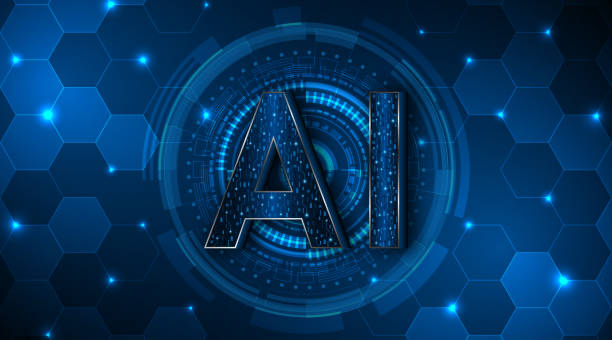
The future of #Advanced_Robotics and #Advanced_AI promises remarkable developments that will elevate #Human_Robot_Collaboration to unprecedented levels.
It is expected that in the coming years, we will witness the emergence of robots with far more complex cognitive and physical capabilities.
These advancements, stemming from research in deep learning, advanced neural networks, and soft robotics, could enable an AI robot to perform tasks that are currently only feasible by humans.
One of the most important future trends is the development of humanoid robots with higher emotional and social capabilities.
These robots will not only be capable of performing physical tasks but can also interact in social environments, recognize emotions, and even show empathy.
This could lead to new applications in elderly care, education, and even psychological therapy.
Furthermore, advancements in smart materials and soft robotics will lead to the creation of robots that can change their shape, be more flexible, and move in environments where current rigid robots cannot penetrate.
In the industrial sector, independent and fully autonomous robots that can operate without human supervision will become increasingly common.
These robots can play a key role not only in manufacturing but also in logistics, warehousing, and even smart agriculture.
On the other hand, the development of Artificial General Intelligence (AGI), which possesses human-level or superior intelligence, although still in the early stages of research, holds the potential to completely transform the world.
This future, along with countless opportunities, will also bring new challenges that require careful preparation and planning.
The table below shows some expected capabilities and their impacts:
| Future Capabilities of AI Robots | Expected Impact | Application Area |
|---|---|---|
| Emotional and Social Intelligence | More natural interaction with humans, empathy | Care, education, customer services |
| Soft and Shape-shifting Robotics | Movement in complex environments, increased safety | Internal surgeries, exploration, search and rescue |
| Advanced Self-learning and Self-optimization | Increased efficiency, reduced need for programming | Industry, agriculture, complex systems |
| Brain-Computer Interfaces (BCI) | Direct robot control by thought, enhanced human abilities | Prosthetics, complex robot control, assistance for the disabled |
| Nano and Microscopic Robots | Disease treatment at the cellular level, production of new materials | Medicine, materials engineering, biotechnology |
Limitations and Technical Challenges in the Path of Intelligent Robotics
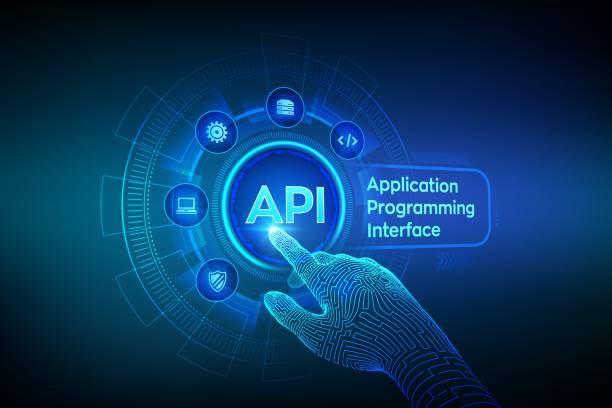
Despite significant advancements in intelligent robotics, #Technology_Limitations and technical challenges still stand in the way of #AI_Robot_Development.
One of the most important of these limitations is the issue of #Robotic_Energy supply and battery life.
Advanced robots require high processing power and complex movements, which demand significant energy consumption.
Current batteries often lack sufficient capacity for long hours of operation, creating limitations on the autonomy and operational duration of robots.
Another challenge is the #Hardware_Development and physical capabilities of robots.
Building robots that are simultaneously strong, agile, delicate, and safe is extremely difficult.
Designing grippers (grasping appendages) that can pick up various objects of different shapes and materials with appropriate precision and strength remains an active area of research.
Furthermore, the ability of robots to move and navigate in unstructured and irregular environments, such as natural settings or damaged buildings, has not yet reached perfection.
In terms of artificial intelligence, achieving Artificial General Intelligence (AGI), which can learn and act like humans in any domain, remains a long-term goal.
Current AI systems are very powerful in specific domains (narrow AI), but transferring their knowledge and skills from one domain to another remains challenging.
The ability to generalize and adapt to entirely new environments without requiring reprogramming is one of the biggest technical hurdles.
Issues related to reliability, cybersecurity, and safety are also of high importance.
Robots must be designed to cause minimal harm in case of errors and to be resistant to cyberattacks.
These limitations do not mean a halt to progress, but rather indicate areas for future research and innovation.
Learn more about the technical limitations of robotics.
Are you losing business opportunities because your e-commerce website isn’t generating as much revenue as it could? Rasaweb, specializing in professional e-commerce website design, solves this problem permanently!
✅ Increase sales rate and revenue
✅ High loading speed and unparalleled user experience
⚡ Get a free e-commerce website design consultation
Practical Guide for Coexistence and Utilization of Future Robots
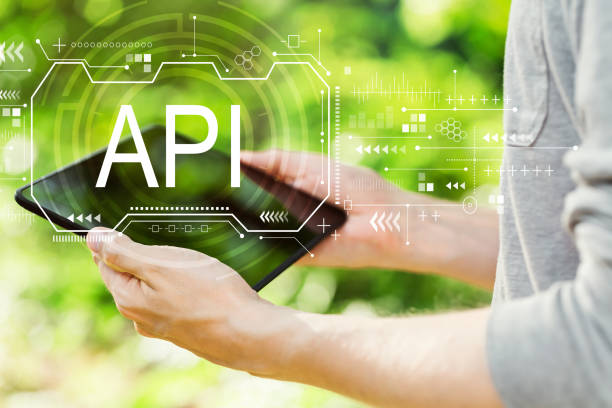
Given the rapid advancements in intelligent robotics, preparing for #Coexistence_with_Robots and their effective utilization in the future is essential.
This section provides practical #Guidance for individuals and organizations to leverage the opportunities of this technology and manage its challenges.
The first step is to increase #Technological_Awareness and gain a correct understanding of the capabilities and limitations of AI robots.
One should neither have unrealistic expectations nor overlook their true potential.
For the workforce, #Skill_Training and retraining are of high importance.
As repetitive jobs are replaced by robots, the need for new skills such as data analysis, programming, robotic system design, as well as soft skills like creativity, critical thinking, and emotional intelligence increases.
Governments and educational institutions should invest in this area to prepare workers for future jobs.
Human-Robot Collaboration will be a key skill; training on how to interact effectively with robots, understanding their ‘language’ (though most robots have simple user interfaces), and the ability to manage them will become highly important.
On the other hand, companies need to develop clear strategies for integrating working with AI robots into their workflows.
This includes identifying tasks that can be effectively performed by robots, planning for employee training, and fostering a culture that encourages innovation and collaboration with new technologies.
Furthermore, paying attention to ethical and accountability issues in robot implementation, including privacy and data security, is crucial.
This proactive approach can help reduce fear and resistance towards these new technologies and increase their public acceptance.
Follow the strategies for managing intelligent robots in this article.
Conclusion and Reflection on the World Ahead for Robots and Humans

At the conclusion of this exploration into the world of #Cutting_Edge_Robotics and artificial intelligence, it is clear that we stand on the threshold of a new era.
The #Capabilities_of_an_AI_Robot are more than just tools for improving efficiency; they represent a paradigm shift in how we live, work, and interact.
This technology, with all its #Opportunities_and_Challenges, will have a #Profound_Impact on every aspect of our existence.
From increased productivity in industries to invaluable assistance in healthcare and education, intelligent robots hold the potential for positive transformation.
However, the path ahead is not without challenges.
The ethical, economic, and social issues arising from the emergence of these technologies require deep discussions, the formulation of new laws, and international cooperation.
Ensuring that the development of AI robots proceeds in a way that considers the benefits for all humans and prevents inequalities or abuses is of vital importance.
Public education and awareness about these technologies are also crucial so that society can adapt to these changes with a proper understanding.
The world ahead is one where the boundaries between humans and machines may become blurred.
This future is not only exciting but also requires deep and responsible thinking.
We must focus not only on technological development but also on the development of human understanding and ethics towards it.
AI robots can be powerful partners for us, if we guide them correctly.
This era is a unique opportunity for humanity to build a future where technology complements human capabilities instead of replacing them, and helps realize our long-held aspirations for improving the quality of life.
Further reflection on the future relationship between humans and robots from a cultural perspective can also be illuminating.
Frequently Asked Questions
| Question | Answer |
|---|---|
| What is an AI robot? | It is a robot that uses artificial intelligence capabilities to understand its environment, reason, learn, and make decisions to perform complex tasks autonomously. |
| What is the main difference between a regular robot and an AI robot? | AI robots can learn and adapt to their environment, while regular robots typically operate based on fixed, pre-programmed instructions. |
| In what areas are AI robots used? | In fields such as industry (production lines), medicine (robotic surgeries), services (customer support, smart vacuum cleaners), exploration (space and underwater), and entertainment. |
| How do AI robots learn? | They acquire new skills by analyzing large data and identifying patterns through Machine Learning and Deep Learning algorithms. |
| Can AI robots have emotions? | Currently, no. They can recognize or simulate emotions, but they do not experience actual emotions like humans. |
| What are the main advantages of using AI robots? | Increased productivity, reduced human error, performing dangerous or repetitive tasks, and providing innovative and efficient services. |
| What challenges exist in the development of AI robots? | The need for abundant and quality data, algorithmic complexity, ethical issues, cybersecurity, and high research and development costs. |
| Are AI robots dangerous to humans? | With adherence to safe design principles and ethical regulations, no. Concerns are more related to social and economic impacts such as changes in the labor market. |
| What is an example of an AI robot in daily life? | Smart vacuum cleaner robots (like Roomba) that autonomously map and clean homes, or smart voice assistants (like Siri and Alexa). |
| How is the future of AI robots predicted? | They are expected to become smarter, more autonomous, and capable of more complex interactions with humans, playing a more prominent role in industry, medicine, transportation, and daily life. |
And other advertising agency services of Rasaweb in the field of advertising
Smart Digital Advertising: A fast and efficient solution for campaign management focusing on marketing automation.
Smart Data Analysis: A combination of creativity and technology to attract customers through custom programming.
Smart Direct Marketing: A specialized service for growing user engagement based on intelligent data analysis.
Smart Google Ads: A specialized service for increasing website traffic based on Google Ads management.
Smart SEO: Designed for businesses seeking to increase click-through rates through marketing automation.
And over hundreds of other services in internet advertising, advertising consultation, and organizational solutions
Internet Advertising | Advertising Strategy | Advertorial
Resources
Intelligent Robot and FutureEvolution of Artificial IntelligenceHistory of AI RobotsApplications of AI Robots
? For your business to leap forward in the digital world and reach more customers, Rasaweb Afarin Digital Marketing Agency, specializing in user-friendly website design and comprehensive online marketing solutions, is with you.
📍 Tehran, Mirdamad Street, next to Bank Markazi, Southern Kazeroon Alley, Ramin Alley, No. 6

